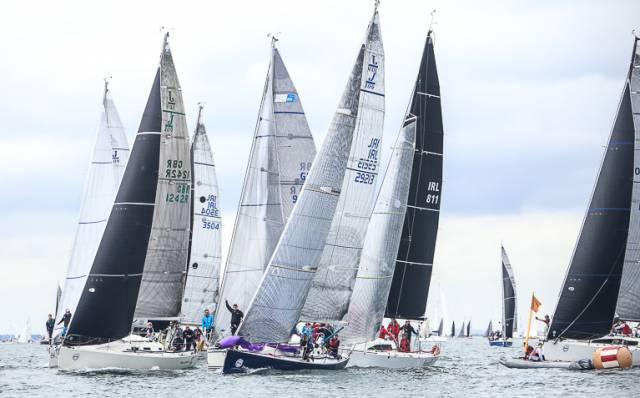As Volvo Dun Laoghaire Regatta 2017 reaches its halfway stage, overall leaderboards are shaping up across 35 racing classes. The so far light wind seventh edition of Ireland's biggest sailing event has produced some impressive performances on the water where in some classes leaders are counting straight wins after two days of racing and a full programme so far.
With all classes aiming for either two or three races today, results in the 475–boat fleet were still being computed in some classes at 6pm.
Day two racing started with the bumper 31–boat IRC offshore class and a start close to the Dun Laoghaire shoreline.
The 2015 champion, George Sisk's Farr 42 WOW, made the best of the vagaries of an 18–mile shortened coastal course to win on IRC overall from the Irish National Sailing School (INSS) J109 Jedi skippered by Kenneth Rumball.
The 18–mile course took the fleet south to the Kish Bank but westerly winds proved so fickle for it led to a decision to shorten the race off Bray in County Wicklow.
An hour later, the IRC Zero, One and Two also took the coastal course south for a four and a half hour race.
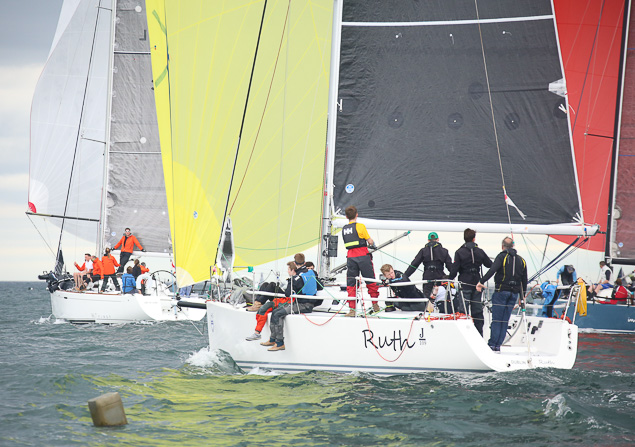 There was some good breeze to get offshore and IRC fleets out of the bay......
There was some good breeze to get offshore and IRC fleets out of the bay......
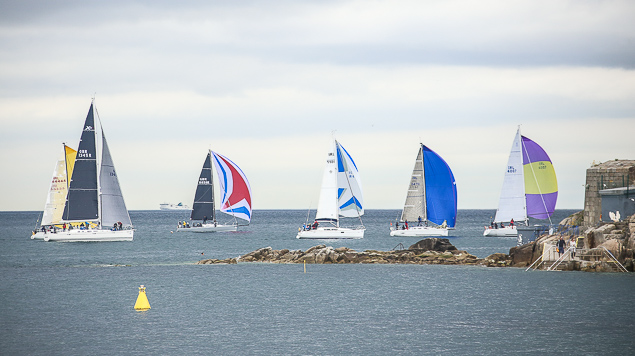 ....hugging the coast by Sandycove Point, spinnakers pulling well.....
....hugging the coast by Sandycove Point, spinnakers pulling well.....
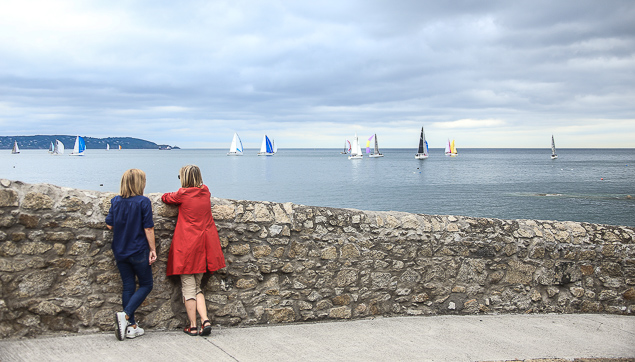 ...but even by Bullock Harbour in Dalkey, problems had started with fickle westerlies for the 18–mile race
...but even by Bullock Harbour in Dalkey, problems had started with fickle westerlies for the 18–mile race
Swansea yacht Dark Angel (Tony Ackland), that has already enjoyed early season success at both June's ICRA Championships at Royal Cork and the Sovereign's Cup in Kinsale, is now leading Class Zero in Dublin. The Dubois 37 has a three point lead over Royal Cork's Ker 37 Jump Juice, (Conor Phelan).
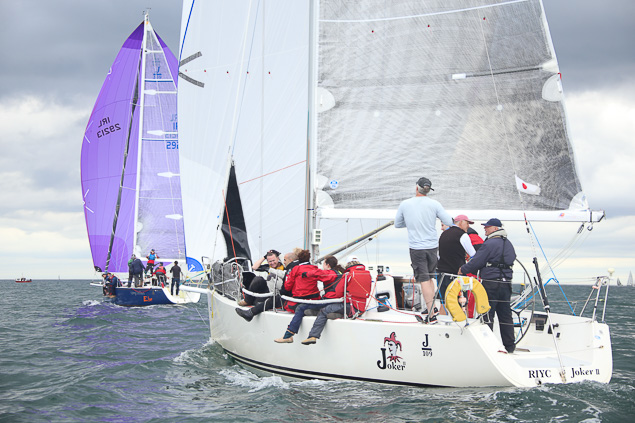 John Maybury managed the light winds well to notch up another counter in today's coastal race to Bray
John Maybury managed the light winds well to notch up another counter in today's coastal race to Bray
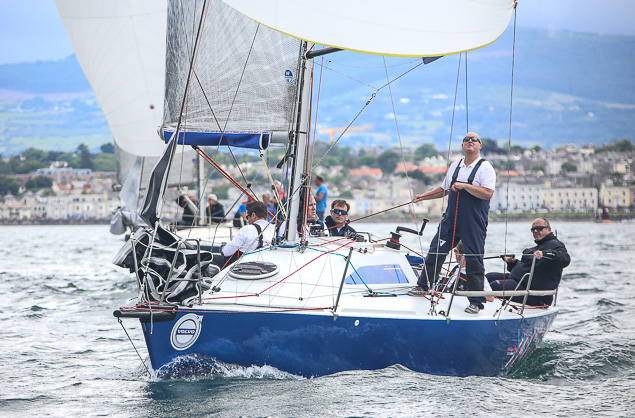 So did Dave Cullen's Checkmate from Howth who has halved the winning margin of the Scottish Class Two leader, Trastada
So did Dave Cullen's Checkmate from Howth who has halved the winning margin of the Scottish Class Two leader, Trastada
An impressive second place for Joker II ensures John Maybury's place at the top of 29–boat IRC one, arguably the most competitive IRC fleet of the regatta. The Royal Irish J109 now leads by 12–points from the visiting Scottish First 36.7 Animal skippered by Kevin Aitken.
In IRC two, Scottish half–tonner Trastada from Fairlie Yacht Club continues to lead but Dave Cullen's Checkmate XV Half Tonner now in second has halved Roddy Angus's lead to just two points.
During the course of the coastal race, the three IRC fleets compressed as they reached the line between the Baily in the north and Dalkey in the south. Half tonners in class two caught up with class one back markers and for many the race restarted as the wait for new wind began. Several observers say prevailing westerlies were fighting with a sea breeze from the east which never materialised.
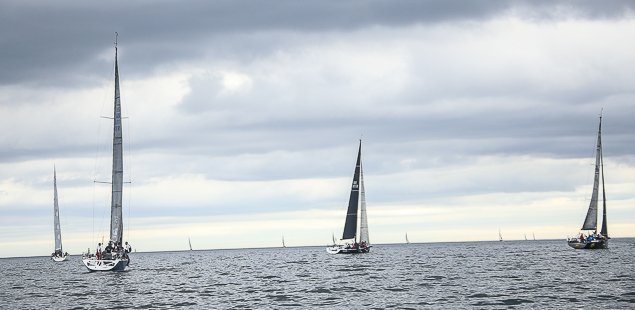 At one point class zero were drifting in no wind....
At one point class zero were drifting in no wind....
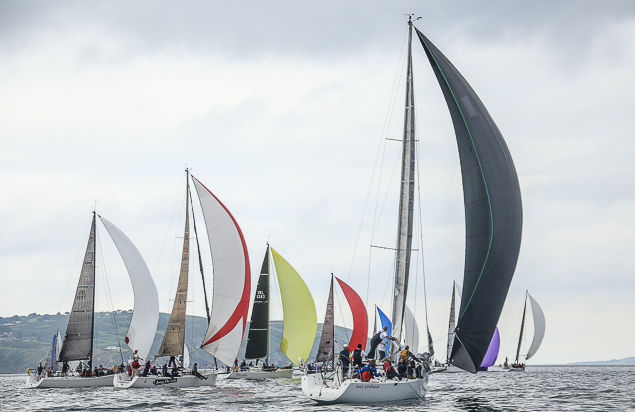 ......while just 300 metres to the north the tightly bunched class one leaders were sailing along in a ten–knot westerly
......while just 300 metres to the north the tightly bunched class one leaders were sailing along in a ten–knot westerly
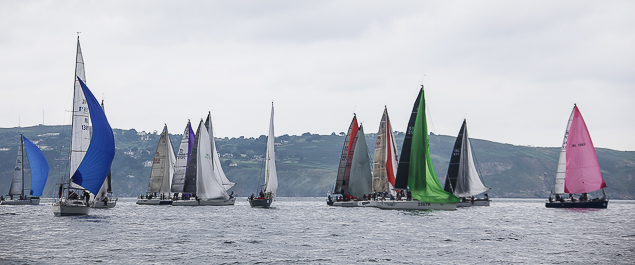 ...but not for long.....
...but not for long.....
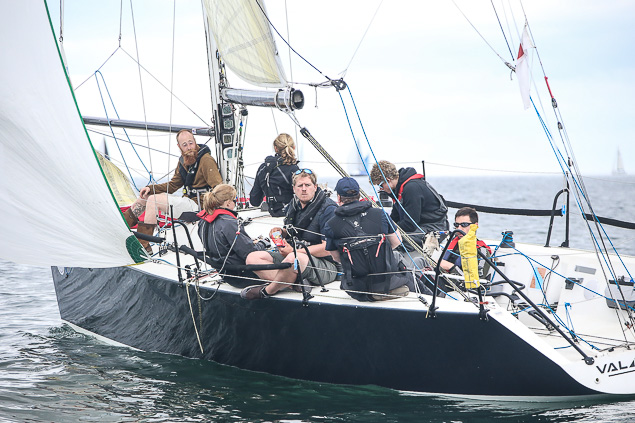 It left only one option. Liverpool Yacht Club entry Valkerie enjoy a Kish Bank picnic
It left only one option. Liverpool Yacht Club entry Valkerie enjoy a Kish Bank picnic
Although the big IRC boats were out in the Irish Sea, the size of the regatta fleet at over 475 boats meant the bay was still full of sails with action across five race courses from 11am. There was also some flat spots for the inshore courses with by far the best conditions off Seapoint Bay for some of the dinghy classes.
In IRC Three, Richard Colwell's Fusion from Howth Yacht Club continued his winning streak with two more wins and a second this time on the centre course to lead by a full eight points in the eight boat fleet.
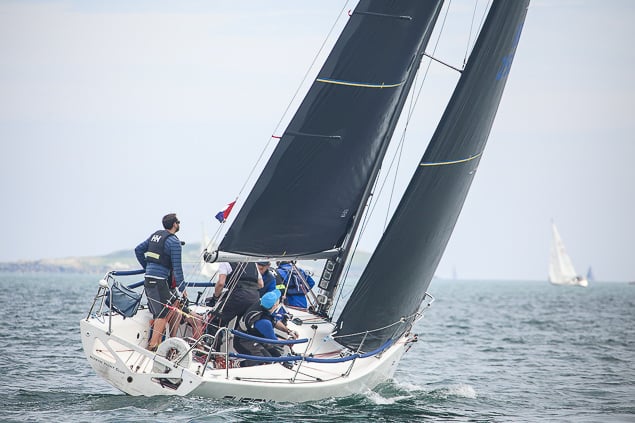 Four wins out of five for Richard Colwell's Corby 33 Fusion
Four wins out of five for Richard Colwell's Corby 33 Fusion
In IRC four, Ken Lawless's Quarter Tonner also keeps his early lead but only by half a point. Cartoon, on 8.5 points, leads Jonathan Flood's modified Formula 28 Flash from Bray Sailing Club in the 15-boat fleet.
Many of Afloat.ie's IRC predictions are ringing true but there's still a long way to go before the fatlady sings at Dun Laoghaire on Sunday.
Ten classes have included the regatta as part of their championship calendar in 2017: GP14s, 420s and Mermaid dinghies are racing for Leinster honours, while SB20s, J24s and Squibs will decide East Coast titles, and the Sigma 33s, Beneteau 21s and the Wayfarers will race for national trophies.
420 National Champions Geoff Power and James McCann from Waterford harbour who were crowned last week at Royal Cork's DinghyFest are on target for the Leisnter title too with three second places to give them a two point margin in the 14–boat fleet.
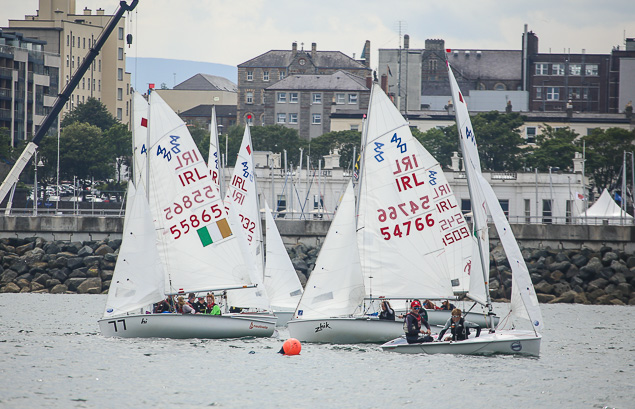 420 dinghies training in Dun Laoghaire Harbour prior to today's Leinster Championships
420 dinghies training in Dun Laoghaire Harbour prior to today's Leinster Championships
In the 20–boat Sigma 33 Irish championships, UK visitors occupy the top three places after four races sailed. Dan Lewis's Neyland Yacht Club entry Partisan leads but is on the same four points as the Clyde's Alan Harper. Third is Toby Claridge's Excelle. The top Irish boat is Ballyholme's Paul Prentice in sixth place.
Gerry Dowling's Bad has a string of four wins from five races in the 18–boat SB20 sportsboat championships. Second is Michael O'Connor's Sin Bin, six points adrift.
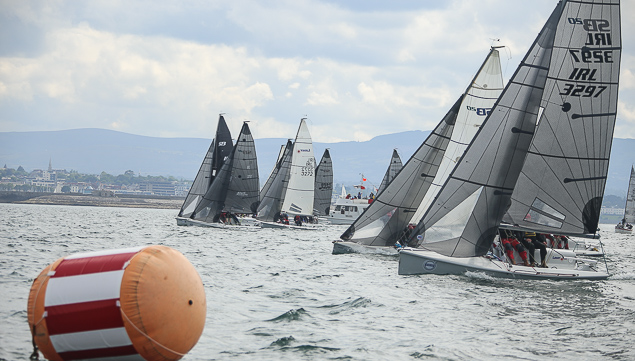 David Dwyer's Sunday Brunch (3297), from the Royal St. George YC, takes the pin in an SB20 start
David Dwyer's Sunday Brunch (3297), from the Royal St. George YC, takes the pin in an SB20 start
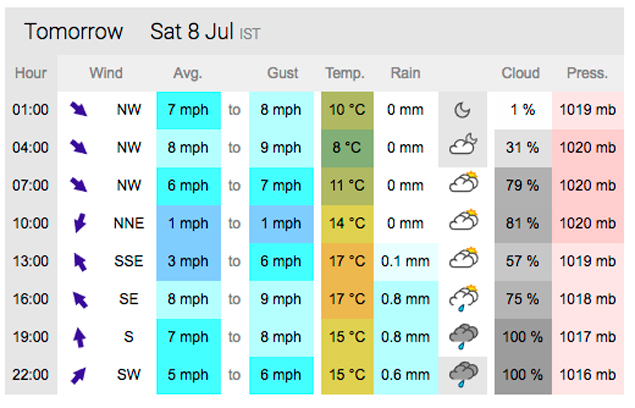 XC weather predicts lighter conditions for Saturday
XC weather predicts lighter conditions for Saturday
According to forecasters, it looks like there will be more light westerlies for racing tomorrow and as a result organisers plan for a start one hour later than scheduled.
Meanwhile, yesterday's first race of the offshore class was put into turmoil right at the end of the race. The VDLR Protest Committee found there was an 'improper action' of the Race committee in writing 'ambiguous sailing instructions' and not signalling correctly the course to be sailed, which created confusion in the finish of yesterday's offshore fleet finish at the harbour.
It directly affected the finishing positions of a majority of the fleet. The misunderstanding of the sailing instructions and course signal was not the fault of the competitors, the jury found. It granted redress so boats were to be scored by the list of times by the GPS tracking company that tracks the offshore fleet.
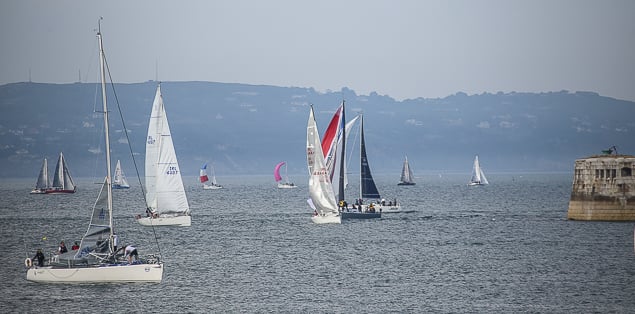 There was finish line confusion (above) and then redress for the offshore fleet yesterday after a protest hearing
There was finish line confusion (above) and then redress for the offshore fleet yesterday after a protest hearing
Results are provisional and subject to protest Full results in all 35 classes are available here.



























